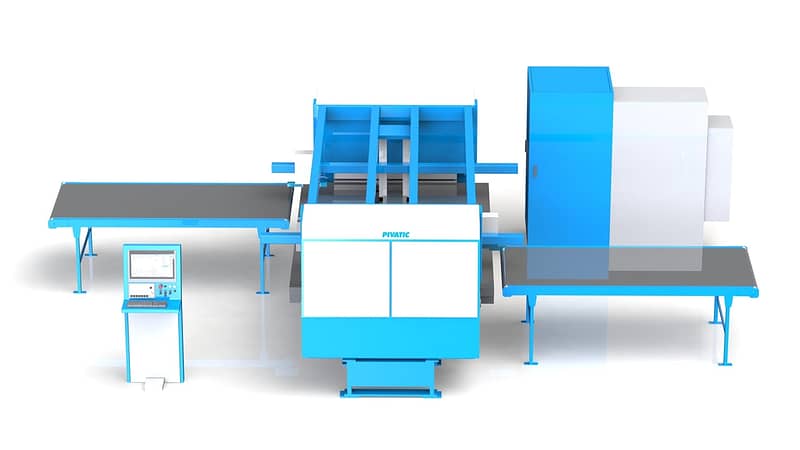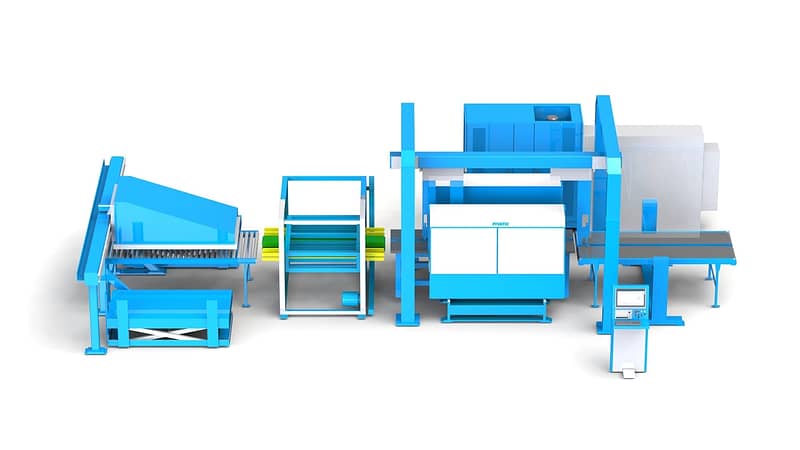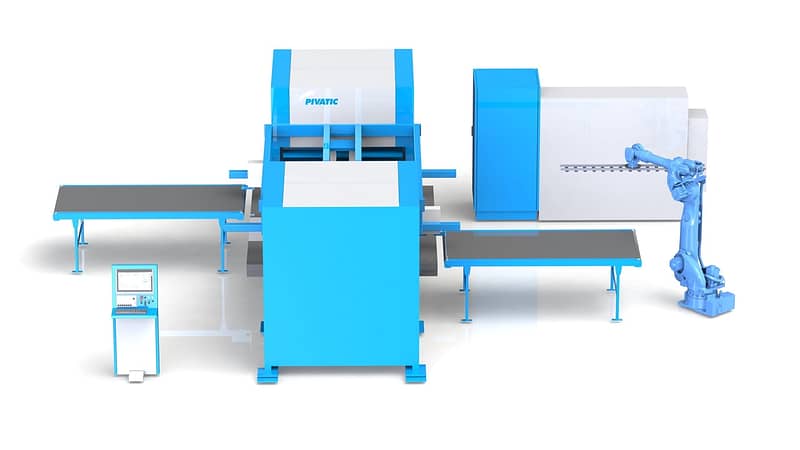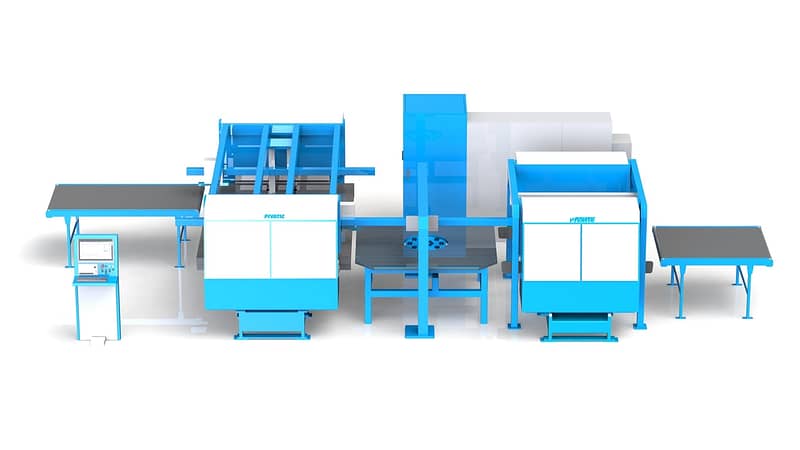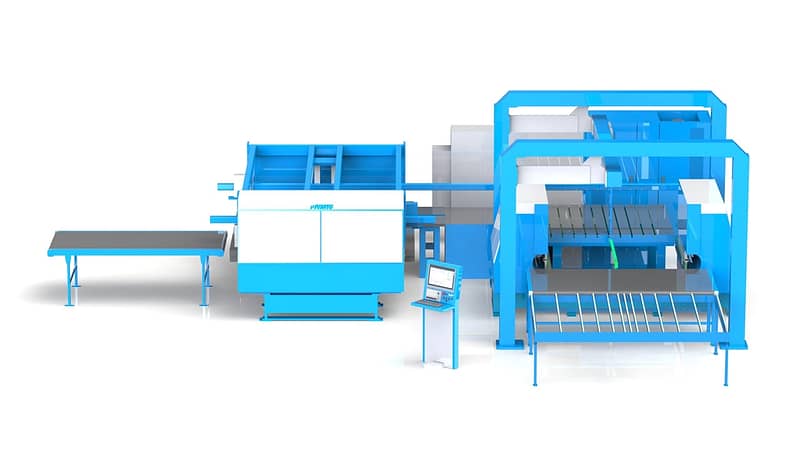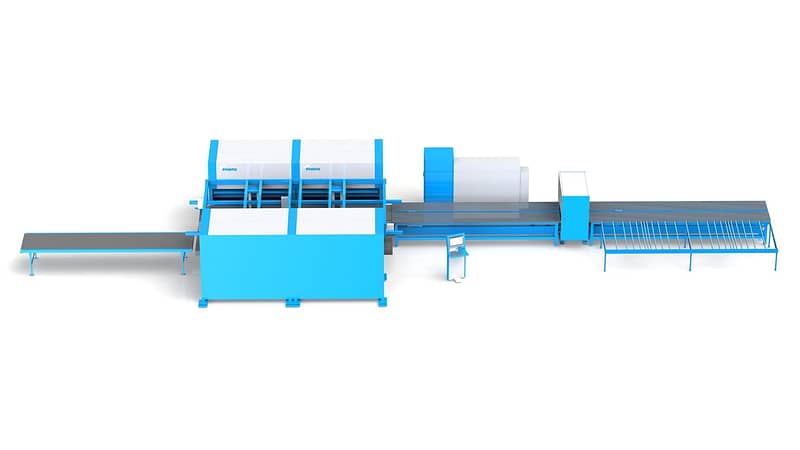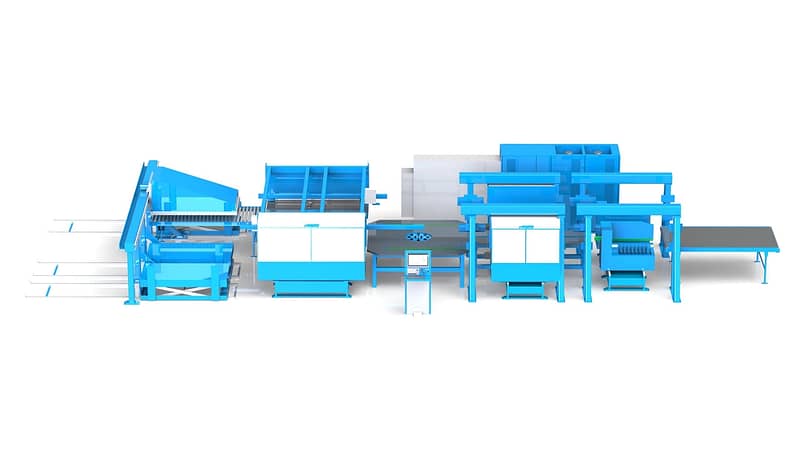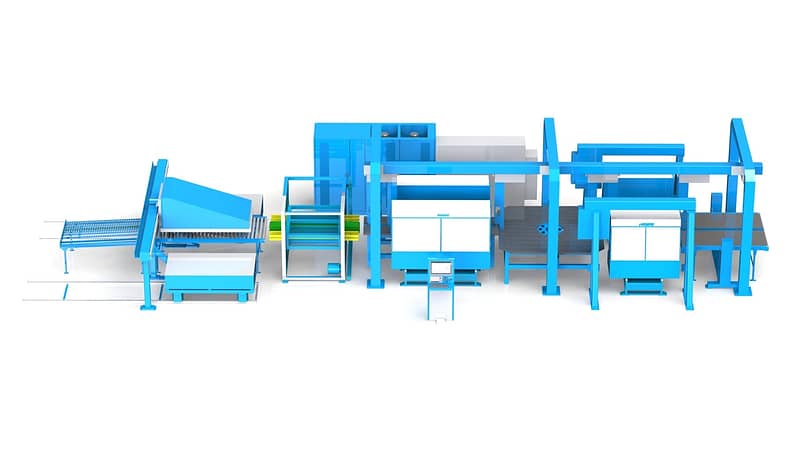Bending Lines for Maximum Efficiency
Typical reasons for developing sheet metal bending processes are growing capacity needs, cost-efficiency in production, and quality requirements with strict tolerances. The starting point in a bending process is typically a press brake, roll former, or forming presses which all require operators to attend the machine, handle material, position work pieces, and unload the parts by hand. Cycle times, batch sizes, and set up times affect the cost a lot.
PivaBend sheet metal bending lines have a fully automatic process from start to end, equipped for Profile, Panel, or Casing manufacturing. The parts are bent efficiently and can also be fully processed into the desired product on a single line. Short part cycle times are achieved by simultaneously bending all sides of the workpiece. Different bending angles, both upwards and downwards, are performed by the same unit.
The programming system makes flexible production possible, whether for just a single part or for batches of thousands of parts. A PivaBend bending line can be integrated with a PivaPunch punching line providing even greater flexibility for maximum uninterrupted part production efficiency. Integrations with welding stations or clinching tab presses for example are possible.
Modular Line Concept
The types of bending methods utilized by PivaBend are suitable for use with materials with sensitive surfaces like pre-painted steel and aluminum. The material moves between stations and is clamped into place during the bending process while the folding tools follow the material without moving over the surface. This ensures a continuous production and no costly scratches or rejects.
Punched blanks are either transported from a PivaPunch center or loaded from pallets.
Bent parts are discharged either by hand, using a robot for palletizing, or transported straight to a welding cell or assembling line.
The multi-station solutions are designed either in straight line or at an angle, depending on the factory layout.
Bending Lines for Profiles
PivaBend for Profiles is the starting point for any PivaBend solution. The feeding of punched blanks to the system can be done via a conveyor, de-stacking from a blank storage, or directly from a PivaPunch process. The fed blanks can be turned upside down prior to bending with a turning drum to have the burr inside of the bent profile.
The long side bending can be done with PivaBend FLN, PivaBend FLW or a PivaBend FLN-MPB benders. The benders are chosen according to the material type, part size and production efficiency requirements. In one continuous process, both sides of a profile are bent simultaneously, leading into a superior cycle time as low as 5 seconds per Profile. The work pieces are transported and positioned through the bending process by CNC gripper feeders.
After the bending is done, Profiles are discharged from the process by hand, a robot, or fed directly to a follow-up process.
Bending Lines for Panels
PivaBend for Panels uses the profile bending line components at the start, with addition to PivaBend FSW or PivaBend FST for end bending. For FSW, the line material flow can be changed ±90˚ without the need for part turning, or the part can be turned 90˚ with a turning table to maintain a straight material flow. In one continuous process, all four sides of a panel are bent simultaneously, one in each bender, to achieve cycle time as low as 15 seconds per Panel. For parts longer than 3000 mm / 120”, a run-through FST bender is required for the end bending.
The PivaBend FSW can be equipped with an automatic hold down tool organizer for different part widths. The change from one part width to another is done automatically by the line controller system. Programming of next part is prepared while the line is running.
After the bending is done, Panels are discharged from the process by hand, a robot, Pivatic stacker or fed directly to a follow-up process such as spot welding, clinching, or assembly.
Bending Lines for Casings
PivaBend for Casings uses the panel bending line components at the start, with addition to PivaBend FSO or PivaBend FSO-C for box bending. The casing-type upfold of sections is done with an open-frame FSO bender or the c-framed FSO-C bender. The large upfold sections are supported by brush elements during the bending process. For a panel with only upward bends in the ends, a FSO-C bender can eliminate the need for a FSW bender and replace it to handle both the end bendings and the box bending.
Benefits
- Material-friendly wing forming method used, most suitable for pre-painted material.
- Reduced cycle time – all sides are bent at the same time in a continuous process.
- Freely programmable sections on all sides.
- Bends both parallel sides after positioning at the same time for excellent accuracy.
- No tool wear thanks to the bending method.
- Optimized configurations for profiles, panels, and wrapper-type products.
- Integrations possible – such as welding and forming clinching tabs.
